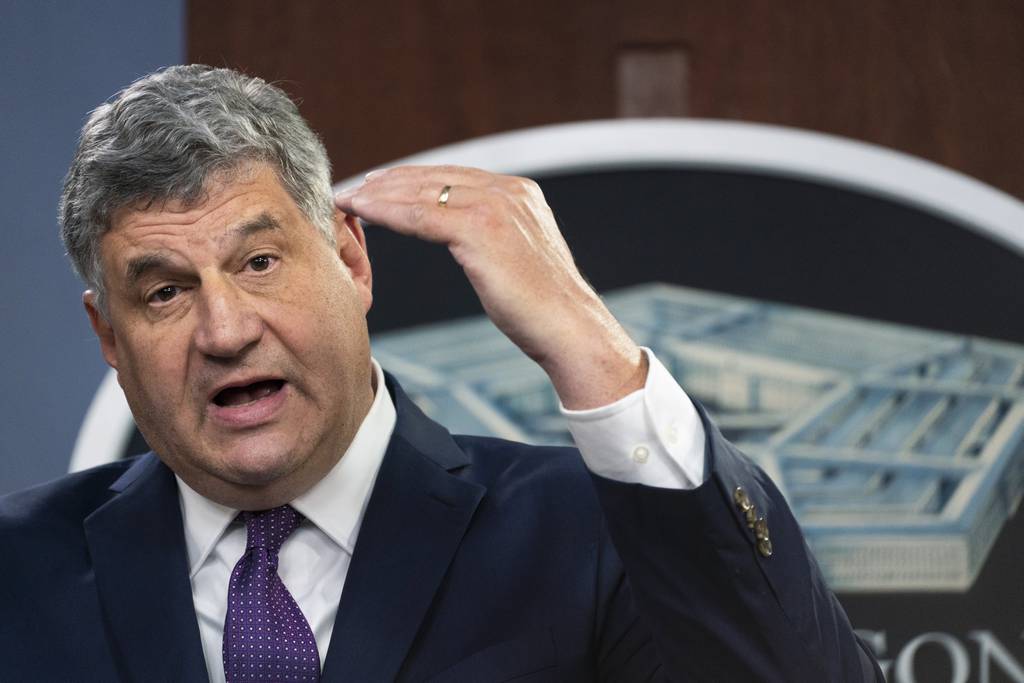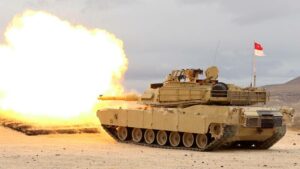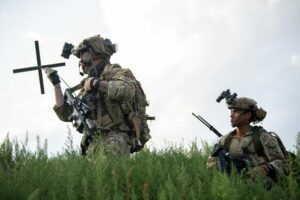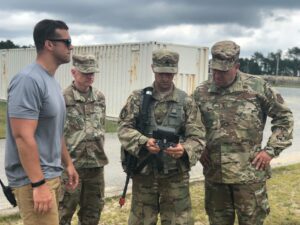
WASHINGTON — A week after releasing its first industrial strategy, the Pentagon is sprinting to meet with companies on how to put it into action.
The meetings will focus both on feedback to the strategy and on how to best implement it, said Justin McFarlin, who leads Pentagon industrial base development and international outreach, in an interview with Defense News.
This current round of engagement follows a long period of outreach last year while the strategy was being written. In total, Defense Department officials met with 100 organizations — including companies, trade associations and venture capitalists — across more than 25 engagements, he said. They’ve restarted this process as they work on the strategy’s implementation
The plan will largely decide the strategy’s success, in no small part due to how it was written. The strategy includes few new details or assessments of the defense industry. Instead, it’s a synthesis of other recent Pentagon reports on the industrial base, meant to better marshal the department’s resources.
“One of the things that we have heard ... is the devils in the details,” said McFarlin. “We acknowledge that.”
Because the plan will be classified, industry executives are visiting the Pentagon for in-person briefings. For that reason and because of the short timeline, McFarlin said, the number of meetings will be somewhat smaller than the first round — but not by much. The companies being consulted include those on both the traditional and non-traditional sides of the defense market.
“We are literally scheduling those meetings nonstop,” he said.
The goal, he said, is to finish this round of outreach by the end of January.
In a briefing last week, the Pentagon’s top two industrial base policy officials said the implementation plan would include, among other details, a list of priorities to make the strategy work, ways to increase public-private partnerships and metrics for success.
Regardless of its own work, though, the Pentagon faces challenges outside its control. Congress still has yet to pass a full defense budget, and the strategy’s next phase will likely take additional funding, McFarlin said.
“The implementation, the staffing and the resources in order to execute and implement it are definitely things that are in jeopardy when things like [continuing resolutions] are in place,” he said.
One issue he mentioned in particular is the workforce. The Pentagon’s industrial base office has consistently struggled with staffing, and has recently seen its workload increase, with the wars in Ukraine and Israel along with White House-ordered reports on America’s defense industry.
The funding levels set by continuing resolutions make those workforce issues harder to manage, McFarlin said.
“There’s tons of things that we as leaders would love to do,” he said. “But we have to pick and choose the things that we really prioritize, because we can’t have all of our people doing everything.”
Noah Robertson is the Pentagon reporter at Defense News. He previously covered national security for the Christian Science Monitor. He holds a bachelor’s degree in English and government from the College of William & Mary in his hometown of Williamsburg, Virginia.
- SEO Powered Content & PR Distribution. Get Amplified Today.
- PlatoData.Network Vertical Generative Ai. Empower Yourself. Access Here.
- PlatoAiStream. Web3 Intelligence. Knowledge Amplified. Access Here.
- PlatoESG. Carbon, CleanTech, Energy, Environment, Solar, Waste Management. Access Here.
- PlatoHealth. Biotech and Clinical Trials Intelligence. Access Here.
- Source: https://www.defensenews.com/pentagon/2024/01/17/pentagon-restarts-meetings-to-implement-new-industrial-strategy/
- :has
- :is
- :not
- 100
- 25
- 70
- 9
- a
- acknowledge
- Action
- Additional
- After
- All
- along
- among
- an
- and
- ARE
- AS
- assessments
- associations
- At
- base
- BE
- because
- being
- BEST
- Better
- both
- Briefing
- budget
- but
- by
- capitalists
- challenges
- Choose
- christian
- classified
- College
- Companies
- Congress
- continuing
- control
- covered
- Current
- decide
- Defense
- Defense Department
- definitely
- Degree
- Department
- details
- Development
- do
- doing
- due
- end
- engagement
- engagements
- English
- Ether (ETH)
- everything
- execute
- executives
- faces
- feedback
- few
- finish
- First
- Focus
- follows
- For
- from
- full
- funding
- GAO
- goal
- Government
- harder
- Have
- he
- heard
- his
- holds
- How
- How To
- HTTPS
- images
- implement
- implementation
- in
- include
- includes
- Including
- Increase
- industrial
- industry
- instead
- International
- Interview
- into
- Israel
- issue
- issues
- IT
- ITS
- January
- jpg
- Justin
- largely
- Last
- Last Year
- leaders
- Leads
- levels
- like
- likely
- List
- Long
- love
- make
- manage
- Market
- mary
- meant
- Meet
- meetings
- mentioned
- met
- Metrics
- Monitor
- more
- much
- National
- national security
- New
- news
- next
- no
- number
- of
- Office
- officials
- on
- or
- order
- organizations
- Other
- our
- outreach
- outside
- own
- part
- particular
- partnerships
- pass
- pentagon
- People
- period
- phase
- pick
- Place
- plan
- plato
- Plato Data Intelligence
- PlatoData
- policy
- previously
- Prioritize
- process
- put
- really
- reason
- recent
- recently
- releasing
- reporter
- Reports
- Resources
- restarted
- round
- Said
- scheduling
- Science
- security
- seen
- set
- Short
- Sides
- small
- smaller
- somewhat
- staffing
- Still
- Strategy
- success
- synthesis
- Take
- than
- that
- The
- they
- things
- this
- those
- though?
- timeline
- to
- tons
- top
- Total
- trade
- traditional
- two
- Ukraine
- venture
- virginia
- was
- ways
- we
- week
- when
- while
- white
- WHO
- will
- william
- with
- Work
- Workforce
- would
- written
- year
- yet
- zephyrnet












